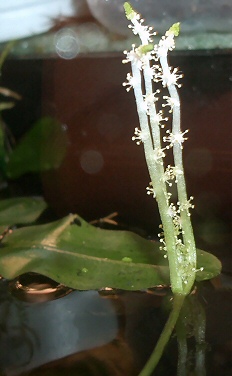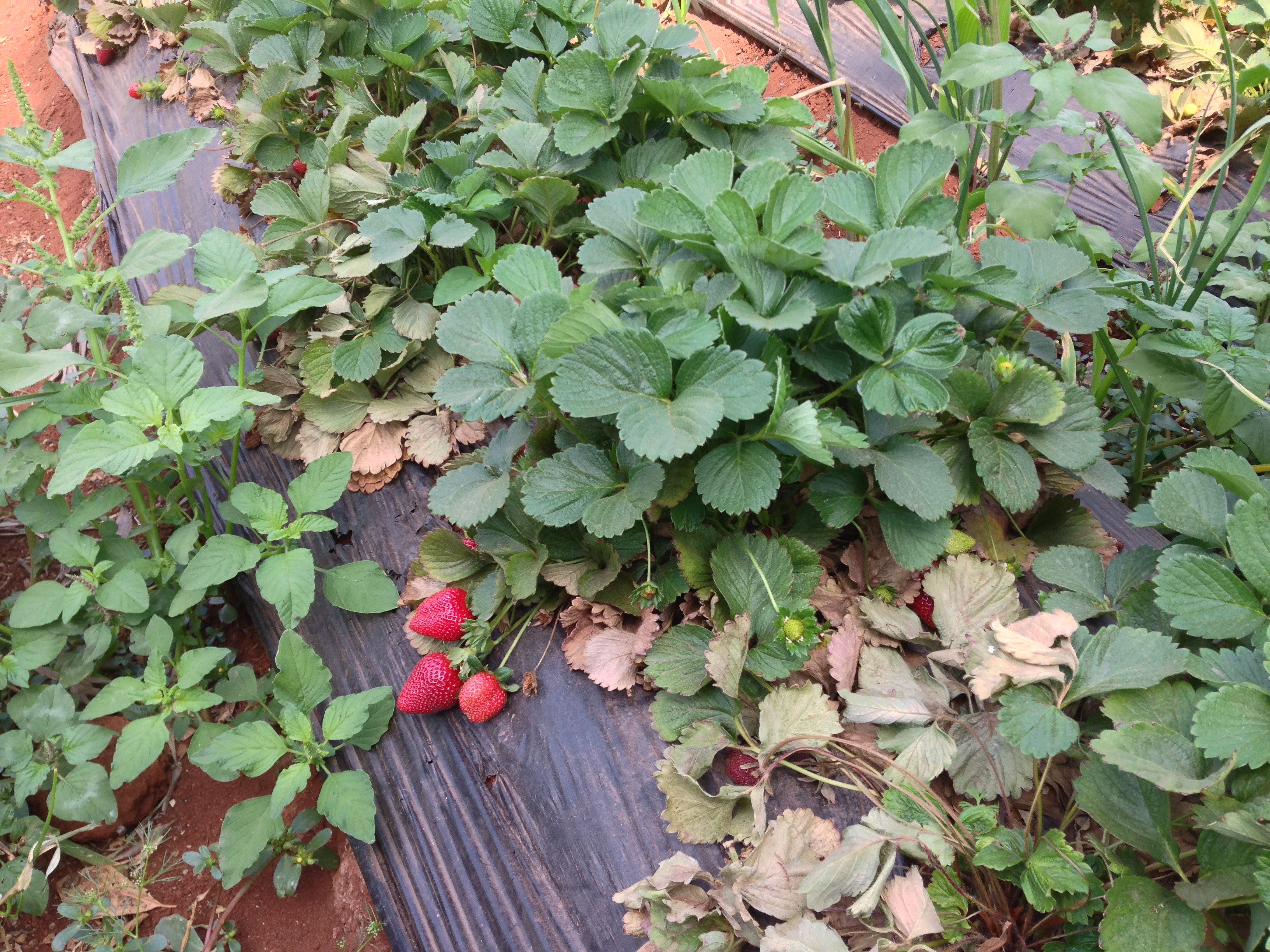|
Kas Plateau
The Kas Plateau Reserved Forest, also known as the Kaas Pathar, is a plateau situated 25 kilometres west from Satara city in Maharashtra, India. It falls under the Sahyadri Sub Cluster of the Western Ghats, and it became a part of a UNESCO World Natural Heritage Site in 2012.BUTTERFLIES OF KAAS VALLEY, MAHARASHTRA, INDIA Suresh Kumar Shah, Bulganin Mitra (2015), Zoological Survey of India It is a known for various types of seasonal wild flowers bloom and numerous species of endemic butterflies annually in the months of August and September. The plateau is situated at an altitude of 1200 metres and is approximately ... [...More Info...] [...Related Items...] OR: [Wikipedia] [Google] [Baidu] |
Satara District
Satara district (Marathi pronunciation: Help:IPA/Marathi, [saːt̪aɾaː]) is a Districts of Maharashtra, district of Maharashtra state in western India with an area of and a population of 3,003,741 of which 14.17% were urban (). Satara (city), Satara is the capital of the district and other major towns include Medha, Wai, Maharashtra, Wai, Karad, Koregaon, Man, Vikramgad, Maan, Koynanagar, Rahimatpur, Phaltan, Mahabaleshwar, Vaduj and Panchgani. This district comes under Pune Administrative Division along with Pune District, Pune, Sangli District, Sangli, Solapur District, Solapur and Kolhapur district, Kolhapur. The district of Pune District, Pune bounds it to the north, Raigad District, Raigad bounds it to the north-west, Solapur District, Solapur the east, Sangli District, Sangli to the south, and Ratnagiri District, Ratnagiri to the west. The Sahyadri, Sahyadri range, or main range of the Western Ghats, runs north and south along the western edge of the district, separating ... [...More Info...] [...Related Items...] OR: [Wikipedia] [Google] [Baidu] |
Drosera Indica
''Drosera indica'' is an carnivorous plant, insectivorous plant, a sundew native to tropical countries throughout the world, from Asia to Africa, but absent from the neotropics.Schlauer, J. 2011World Carnivorous Plant List – Nomenclatural Synopsis of Carnivorous Phanerogamous Plants Retrieved 30 March 2011. Together with Australian endemic species ''Drosera aquatica, D. aquatica'', ''Drosera aurantiaca, D. aurantiaca'', ''Drosera barrettorum, D. barrettorum'', ''Drosera cucullata, D. cucullata'', ''Drosera finlaysoniana, D. finlaysoniana'', ''Drosera fragrans, D. fragrans'', ''Drosera glabriscapa, D. glabriscapa'', ''Drosera hartmeyerorum, D. hartmeyerorum'', ''Drosera nana, D. nana'', ''Drosera serpens, D. serpens'' it makes up the section (botany), section ''List of Drosera species#Arachnopus, Arachnopus''.Barret and Lowrie, 2013Application of names in Drosera section Arachnopus (Droseraceae) Retrieved 15 November 2017. Description ''Drosera indica'' is an unbranched, annual ... [...More Info...] [...Related Items...] OR: [Wikipedia] [Google] [Baidu] |
Arisaema Murrayi
''Arisaema'' is a large and diverse genus of the flowering plant family Araceae. The largest concentration of species is in China and Japan, with other species native to other parts of southern Asia as well as eastern and central Africa, Mexico and eastern North America. Asiatic species are often called cobra lilies, while western species are often called jack-in-the-pulpit; both names refer to the distinctive appearance of the flower, which consists of an erect central spadix rising from a spathe. Classification and relationships The closest relatives of ''Arisaema'' appear to be ''Pinellia'' and '' Typhonium'' (although the latter as defined in 2004 seems to be paraphyletic, having given rise to ''Arisaema'' and other genera). One unusual trait shared by all ''Arisaema'' species, and not those of other genera, is the ''sex change or act of Sequential hermaphroditism.'' ''Arisaema'' plants are typically male when small, and female or hermaphroditic when large, with a sing ... [...More Info...] [...Related Items...] OR: [Wikipedia] [Google] [Baidu] |
Aponogeton Satarensis
The Aponogetonaceae (the Cape-pondweed family or aponogeton family) are a family of flowering plants in the order Alismatales. In recent decades the family has had universal recognition by taxonomists. The APG system (1998) and APG II system (2003) treat it in the order Alismatales in the clade monocots. The family consists of only one genus, ''Aponogeton'', with 56 known species (Christenhusz & Byng 2016 ) of aquatic plants, most of which have been included in a molecular phylogeny by Chen et al. (2015). The name was published in '' Supplementum Plantarum'' 32: 214 (1782) and is derived from a geographic location neighboring (''geton'') the Apono tribal district of coastal Gabon. Some species are used as ornamental plants in aquariums. Distribution They are aquatic plants, which are found in tropical to warm temperate regions of Africa, Asia and Australasia.Watson, L. & Dallwitz, M. J. (1992 onwards)Aponogetonaceae ''Aponogeton distachyos'' is originally from South Africa but ... [...More Info...] [...Related Items...] OR: [Wikipedia] [Google] [Baidu] |
Adenoon Indicum
''Adenoon'' is a genus of flowering plants in the daisy family described in 1850. There is only one known species, '' Adenoon indicum'', native to the Western Ghats ( Maharashtra, Goa, Karnataka, Tamil Nadu and Kerala) of southwestern India India, officially the Republic of India (Hindi: ), is a country in South Asia. It is the seventh-largest country by area, the second-most populous country, and the most populous democracy in the world. Bounded by the Indian Ocean on the so .... References Monotypic Asteraceae genera Endemic flora of India (region) Plants described in 1850 Flora of Goa Flora of Karnataka Flora of Tamil Nadu Flora of Kerala Flora of Maharashtra Taxa named by Nicol Alexander Dalzell {{Cichorioideae-stub ... [...More Info...] [...Related Items...] OR: [Wikipedia] [Google] [Baidu] |
Vajrai Waterfall
The Bhambavli Vajrai Waterfall is a waterfall located on the Urmodi river in India. It is approximately from the city of Satara, Maharashtra, near the village of Bhambavli and Sahyadri Hill. The height of the waterfall combining all three tiers is , and is the second highest plunge waterfall in India, after the Nohkalikai Falls in Meghalaya Meghalaya (, or , meaning "abode of clouds"; from Sanskrit , "cloud" + , "abode") is a state in northeastern India. Meghalaya was formed on 21 January 1972 by carving out two districts from the state of Assam: (a) the United Khasi Hills and J ..., with a drop of . References {{coord, 17.709, 73.815, display=title Waterfalls of Maharashtra Tourist attractions in Satara district Tiered waterfalls Satara (city) ... [...More Info...] [...Related Items...] OR: [Wikipedia] [Google] [Baidu] |
Sajjangad
Sajjangad (Marathi: सज्जनगड), meaning "Fort of Good People", is located near the city of Satara, India. It is the final resting place of Sant Ramdas in 18th century India (born 1608). His teachings and works written in books such as Dasbodh are read and followed by many people even today in the state of Maharashtra and Sajjangad is a popular place of pilgrimage. History The fort was built by Bahamani rulers in between (1347-1527). Later (1527-1686) it came in possession of the Adilshahi dynasty. This fort was captured by Chhatrapati Shivaji Maharaj on 2 April 1673 from Adilshah. Previously known as Parali, it was renamed Sajjangad. it came into possession of the Mughals in 1700, and was renamed . as Navrous tara.The fort was recaptured within years by the Marathas. It remained in Maratha hands until the demise of the Maratha empire by the British in 1818. Present day The maintenance of the fort and the Samadhi (final resting place) of Sadguru Shri Samarth Ram ... [...More Info...] [...Related Items...] OR: [Wikipedia] [Google] [Baidu] |
Panchgani
Panchgani, called Paachgani (पाचगणी in Marathi), is a hill station and municipal council in Satara district in Maharashtra, India. Panchgani attracts tourists throughout the year. It is also known for having many residential educational institutions. Panchgani is around 108 kilometres from Pune and 250 kilometres from Mumbai. History Panchgani was developed by the British during the British Raj as a summer resort under the supervision of Lord John Chesson in the 1860s. Panchgani was developed as a retirement place because it remained pleasant throughout the year. He surveyed the hills of this region with Rustomji Dubash, and finally decided on this nameless area around the five villages: Dandeghar, Godavali, Ambral, Khingar, and Taighat. The place was aptly named Panchgani, meaning "land between five villages", and Chesson was made superintendent. To develop the infrastructure, Chesson encouraged various professionals - tailors, dhobis, butchers, vegetable vendors ... [...More Info...] [...Related Items...] OR: [Wikipedia] [Google] [Baidu] |
Mahabaleshwar
Mahabaleshwar () is a small town and a municipal council in Satara district, Maharashtra, India. It is a place of pilgrimage for Hindus because Krishna river has its origin here. The British colonial rulers developed the town as a hill station, and served as the summer capital of Bombay Presidency during the British Raj. Geography Mahabaleshwar is located on the mountainous Sahyadri range of the Western ghats that run North to south along western coast of India. The coordinates of the town are . Mahabaleshwar is a vast plateau measuring , bound by valleys on all sides. It reaches a height of at its highest peak above sea level, known as Wilson/Sunrise Point The town is about southwest of Pune and from Mumbai, . Mahabaleshwar comprises three villages: Malcolm Peth, Old "Kshetra" Mahabaleshwar and part of the Shindola village. Mahabaleshwar region is the source of the Krishna River that flows across Maharashtra, Karnataka, Telangana and Andhra Pradesh. The legendary source ... [...More Info...] [...Related Items...] OR: [Wikipedia] [Google] [Baidu] |
The Times Of India
''The Times of India'', also known by its abbreviation ''TOI'', is an Indian English-language daily newspaper and digital news media owned and managed by The Times Group. It is the third-largest newspaper in India by circulation and largest selling English-language daily in the world. It is the oldest English-language newspaper in India, and the second-oldest Indian newspaper still in circulation, with its first edition published in 1838. It is nicknamed as "The Old Lady of Bori Bunder", and is an Indian " newspaper of record". Near the beginning of the 20th century, Lord Curzon, the Viceroy of India, called ''TOI'' "the leading paper in Asia". In 1991, the BBC ranked ''TOI'' among the world's six best newspapers. It is owned and published by Bennett, Coleman & Co. Ltd. (B.C.C.L.), which is owned by the Sahu Jain family. In the Brand Trust Report India study 2019, ''TOI'' was rated as the most trusted English newspaper in India. Reuters rated ''TOI'' as India's most trus ... [...More Info...] [...Related Items...] OR: [Wikipedia] [Google] [Baidu] |







